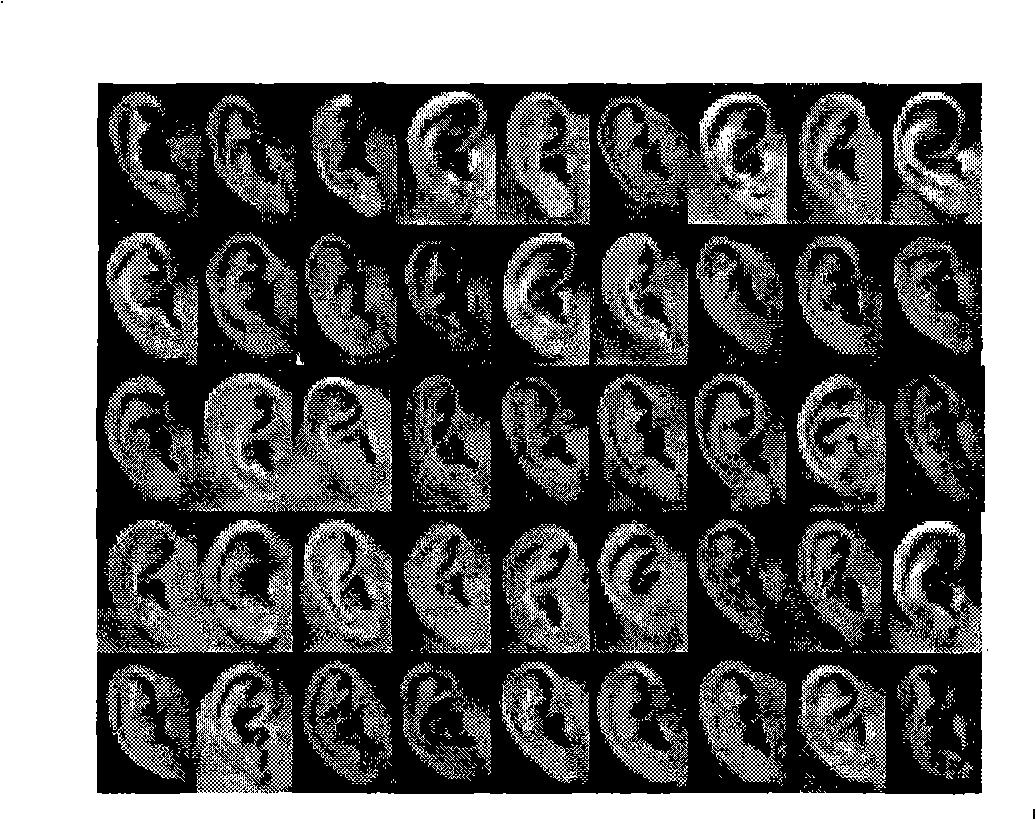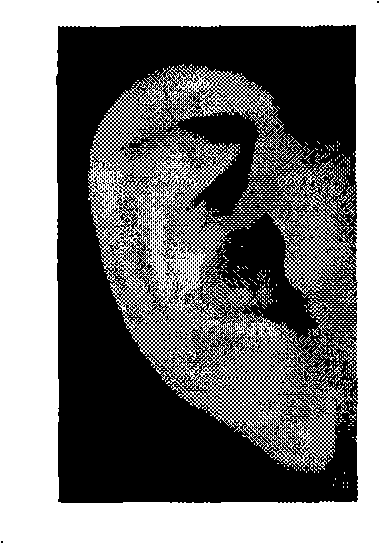Ear image recognition method amalgamating wavelet analysis and matrix feature
A wavelet analysis and image recognition technology, applied in the field of personal identification, can solve problems such as noise interference, low calculation speed, and inaccurate values of wavelet moment invariants
- Summary
- Abstract
- Description
- Claims
- Application Information
AI Technical Summary
Problems solved by technology
Method used
Image
Examples
Embodiment
[0102] A) In this experiment, computer recognition experiments were performed on 600 gray-scale images of 50 types of human ear pictures without noise and 600 noise-added pictures, in which the 12 states of each human ear are as follows: Figure 4 shown.
[0103] B) Gaussian noise with a variance of 0.01 is added correspondingly to each state (overlapping the high-period noise with the image).
[0104] C) First use 10 types of pictures to train the system (calculate the weight of the moment invariant) to obtain the weight of the invariant moment component. Then each class uses 400 images as training samples and the remaining 800 images as testing samples.
[0105] D) In the recognition process, the collected human ear image is first subjected to wavelet modulus maximum value denoising processing and edge extraction using the method of step 2 in the embodiment, and then the image after processing is used in step 3 (1) of the embodiment In the method, the value of wavelet mo...
PUM
 Login to View More
Login to View More Abstract
Description
Claims
Application Information
 Login to View More
Login to View More - R&D
- Intellectual Property
- Life Sciences
- Materials
- Tech Scout
- Unparalleled Data Quality
- Higher Quality Content
- 60% Fewer Hallucinations
Browse by: Latest US Patents, China's latest patents, Technical Efficacy Thesaurus, Application Domain, Technology Topic, Popular Technical Reports.
© 2025 PatSnap. All rights reserved.Legal|Privacy policy|Modern Slavery Act Transparency Statement|Sitemap|About US| Contact US: help@patsnap.com



